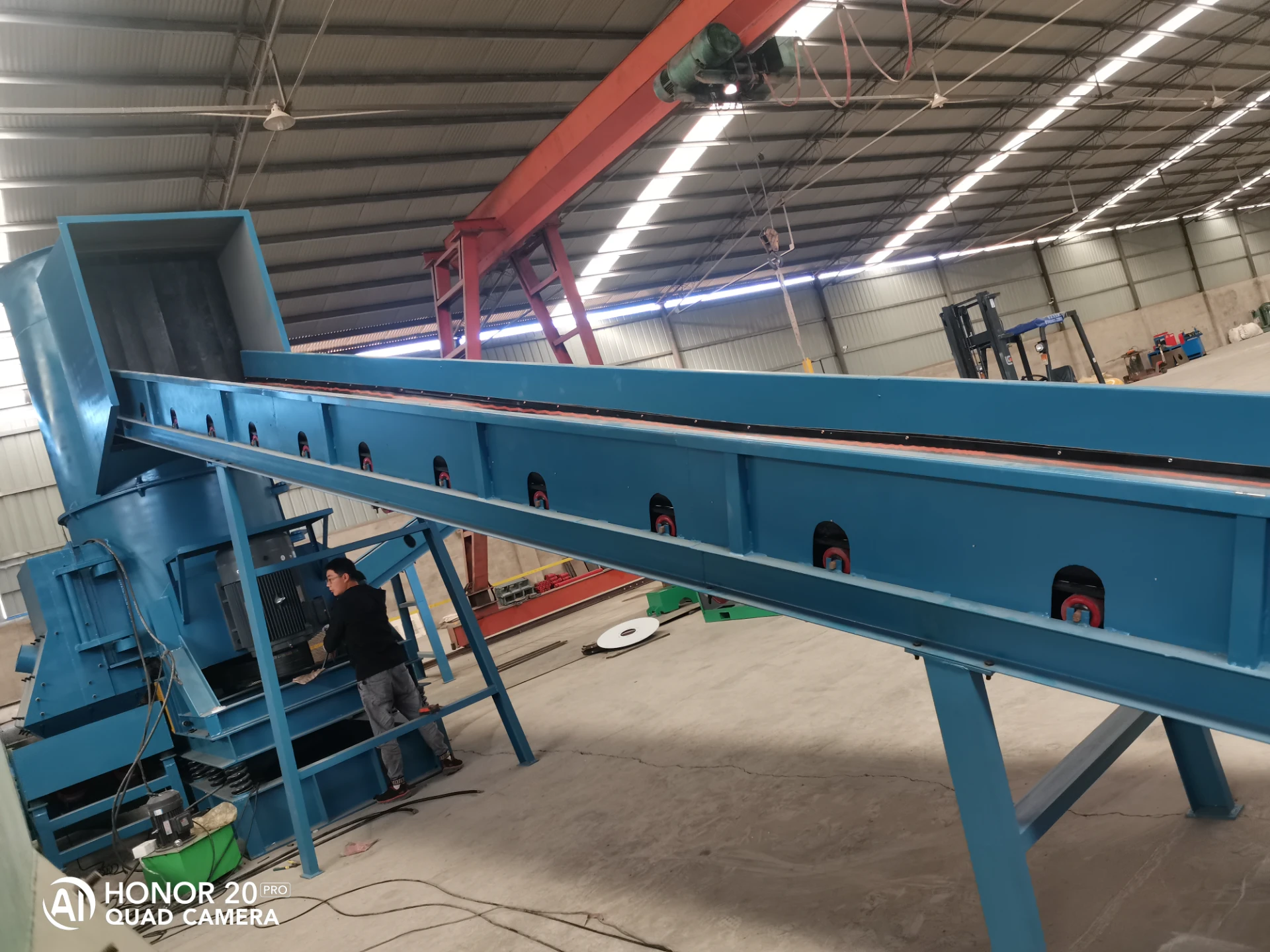

ሐምሌ . 04, 2025 10:05 Back to list

(metal mulcher)
Metal mulchers have transformed the efficiency and sustainability of scrap management, recycling, and industrial waste processing. Their ability to process ferrous and non-ferrous materials into manageable particles has redefined operational workflows across sectors like manufacturing, demolition, and waste management. The technology incorporates advanced cutting, shredding, and sorting capabilities, tackling the most demanding metallic waste streams with minimal downtime and operational cost. This evolution addresses the global demand for sustainable practices and heightened resource recovery, marking metal mulchers as indispensable assets for companies prioritizing innovation and environmental responsibility.
The global adoption of metal mulchers can be traced to two factors: escalating metal recycling requirements and increasing enforcement of environmental regulations. Notably, metal blade leaf mulchers—designed to handle both foliage and metallic debris—bring versatility to urban and industrial environments. Their dual purpose cuts costs and streamlines site maintenance processes, reflecting a holistic approach to waste reduction.
Recent studies identify a steep increase in metal mulcher deployment, predicting the worldwide metal shredding equipment market to exceed $1.4 billion by 2028, with a CAGR of 5.9%. This surge is attributed to rapid urbanization, the expansion of the automotive recycling industry, and smarter, IoT-enabled machinery that optimizes efficiency. As plant managers evaluate investment in double-duty mulchers, the focus shifts toward operational savings and lifecycle value—a crucial consideration amid tightening profit margins and rising raw material prices.
Industry data spotlight the integral role that metal mulchers play in cost-effective material processing. According to a 2023 report from MarketsandMarkets, North America accounts for over 35% of the global demand for industrial shredders, with Europe and Asia-Pacific following closely due to robust automotive and construction recycling sectors. Major infrastructure redevelopment drives the need for consistent, high-throughput metal mulching solutions to meet local quotas and environmental controls.
Analyzing operative performance, next-generation metal blade leaf mulchers report up to 25% greater throughput rates compared to earlier models—processing up to 8,000 lbs/hour of mixed debris. These figures demonstrate the scalability of modern units, highlighting enhanced cutting technology, reduced maintenance intervals, and better energy efficiency. Top-tier industrial metal shredders deliver a cost-per-ton decrease of up to 15%, marking a direct impact on operational profits.
Data from the Institute of Scrap Recycling Industries show that optimized metal mulching systems not only boost recovery rates but also mitigate risks associated with manual sorting. Facilities employing automated shredders record a 43% reduction in workplace incidents involving metallic waste, reinforcing the safety argument for technology upgrades.
The technical evolution of metal mulchers centers on smarter design and advanced metallurgy. Modern machines utilize high-tensile, replaceable steel blades with self-cleaning mechanisms, significantly extending the service life of cutting components. These upgrades accommodate a spectrum of feedstock—including scrap metal, light demolition waste, and yard debris—without sacrificing granularity or speed.
Digital controllers and vibration-dampening housings are now integral, allowing operators to set precise particle size targets with a margin of error of less than 5%. Enhanced energy management systems result in a 20% reduction in electricity consumption per cycle compared to models launched five years prior, optimizing both performance and environmental compliance.
Versatility marks the latest generation of metal blade leaf mulchers, particularly those designed for direct integration into municipal waste and industrial recycling streams. Their robust construction, combined with customizable feeds, enables 24/7 operation—even in high-dust or corrosive environments—which is a significant performance leap.
| Manufacturer | Model | Throughput (lbs/hr) | Blade Life (hours) | Energy Use (kWh/ton) | Industrial Metal Shredder Cost (USD) | Warranty |
|---|---|---|---|---|---|---|
| EcoShred | MS900X | 7,500 | 1,200 | 92 | 89,500 | 3 years |
| TitanMunch | BladeMaster S2 | 8,200 | 1,350 | 87 | 94,000 | 4 years |
| MachTech | Vulcan Z800 | 6,900 | 1,000 | 98 | 79,900 | 2 years |
| GreenBlade | LeafMetal Pro | 7,300 | 1,180 | 90 | 83,500 | 3 years |
The market differentiators among these manufacturers include not just throughput rates and blade longevity but also the industrial metal shredder cost versus expected return on investment. TitanMunch's BladeMaster S2, for instance, commands a higher upfront price but delivers greater blade longevity and lower energy use, contributing to superior lifecycle economics. For operations prioritizing cost efficiency, MachTech's Vulcan Z800 offers strong value, though with lower throughput and a limited warranty period.
Warranty coverage, ease of blade replacement, and after-sales service are decisive factors in vendor selection. EcoShred stands out for its balanced performance and comprehensive warranty, which can be pivotal for facilities processing fluctuating material streams and seeking minimal operational downtime.
Not all facilities require the same specifications or capabilities from their metal mulching equipment. Customization has emerged as a key factor influencing procurement. For example, industries handling primarily lightweight mixed metals benefit from narrower blade gaps and automated separation mechanisms, while those processing dense scrap prioritize reinforced feed chambers and adaptive hydraulic drives.
Manufacturers increasingly offer modular designs that accommodate plug-and-play embellishments, such as on-board dust suppression, sound dampeners, or integrated weighing systems. These options enable operators to meet local environmental standards, optimize logistical flow, and gather data for continuous improvement.
Software-driven diagnostics and predictive maintenance modules now allow facilities to monitor blade ware, motor health, and power draws in real time. Custom configurations often result in up to 18% longer machine uptime and faster blade changeover—sometimes in under 30 minutes, compared to over an hour for legacy units.
Across industries, metal mulchers are proving central to improved productivity and environmental outcomes. In the automotive recycling sector, companies utilizing high-throughput shredders report up to a 32% boost in recovered metal yields, directly translating to increased profit and material circularity. Municipal solid waste facilities are also integrating compact metal blade leaf mulchers into their circulation lines, addressing the challenge of mixed debris without costly manual sorting.
A leading U.S.-based demolition firm deployed a custom-configured EcoShred MS900X for on-site processing, cutting logistics costs by 21% through volume reduction and improved resource separation. Additionally, a large electronics recycler in Germany retrofitted their operations with TitanMunch's BladeMaster S2, achieving compliance with the EU WEEE Directive and reducing regulatory infractions by 60%.
Other sectors adopting advanced metal mulchers include shipbuilding, aerospace, and metal fabrication, where strict quality and traceability standards apply. Portable units are now commonplace in hazardous sites, equipped with remote monitoring, helping industries maintain operational continuity while upholding safety protocols.
The trajectory of the metal mulcher market signals a future where efficiency, adaptability, and sustainability converge. As urbanization accelerates and raw material recovery becomes increasingly critical, the integration of high-performance metal mulchers—and specifically, scalable technologies like metal blade leaf mulchers—will underpin a new standard in facility operations. Manufacturers will continue to redefine industrial benchmarks, either by lowering the total cost of ownership, enhancing safety, or delivering smarter, environmentally attuned solutions.
Looking ahead, the next wave of innovation is likely to leverage AI-driven operational control, further automating sorting and optimizing equipment longevity. For decision-makers, an informed approach to selecting and customizing metal mulching systems is essential—not just to meet immediate industrial demands but to anticipate evolving sustainability mandates. As data and field results confirm, the right metal mulcher is a catalyst for operational resilience, profitability, and environmental progress.

(metal mulcher)
A: A metal mulcher is a powerful machine designed to shred and reduce metal objects into smaller, manageable pieces. It uses rotating metal blades or hammers to break down the material efficiently. These machines are commonly used in recycling and demolition industries.
A: A metal blade leaf mulcher uses durable metal blades instead of plastic to handle tougher debris, including twigs and small branches. This makes it more efficient and long-lasting for heavy-duty yard work. Standard mulchers with plastic blades are best for light, dry leaves.
A: Metal mulchers offer strong cutting efficiency, durability, and the ability to process a wide variety of metal materials. They help reduce waste volume for easier disposal or recycling. They also improve workplace safety by breaking down hazardous metal objects.
A: Industrial metal shredder costs can range from $10,000 to over $100,000 depending on capacity and features. Factors such as size, power, automation, and blade material influence the price. For an accurate quote, it's best to contact manufacturers directly.
A: Yes, metal mulchers come in various sizes and capacities to handle both small and large shredding projects. Smaller models suit workshops or light industry, while larger machines cater to massive recycling or demolition tasks. Always choose a model matched to your workload.
Latest news
Troubleshooting Common Eddy Separator Problems
NewsJul.04,2025
The Role of Metal Recycling Plants in Circular Economy
NewsJul.04,2025
The Impact of Recycling Line Pickers on Waste Management Costs
NewsJul.04,2025
Safety Features Every Metal Shredder Should Have
NewsJul.04,2025
How Industrial Shredders Improve Waste Management Systems
NewsJul.04,2025
How Cable Granulators Contribute to Sustainable Recycling
NewsJul.04,2025